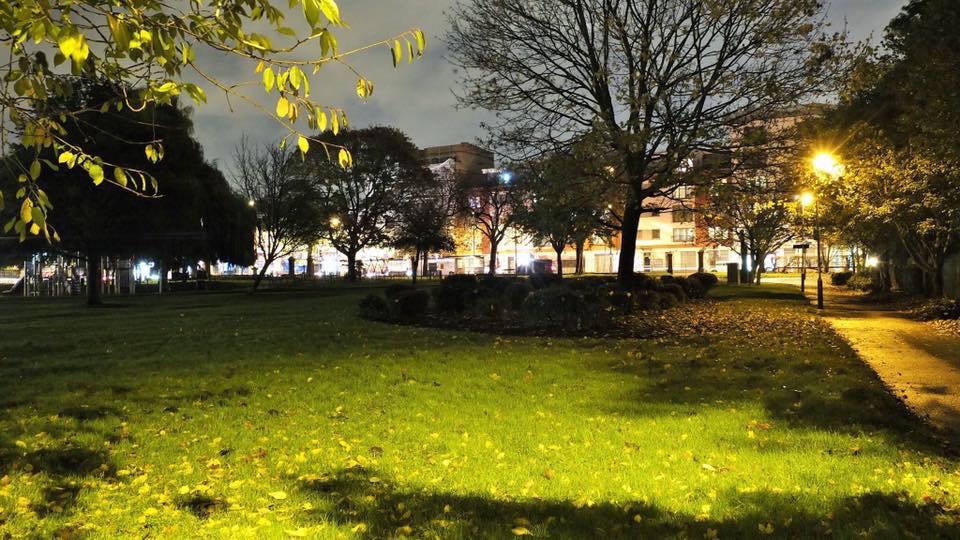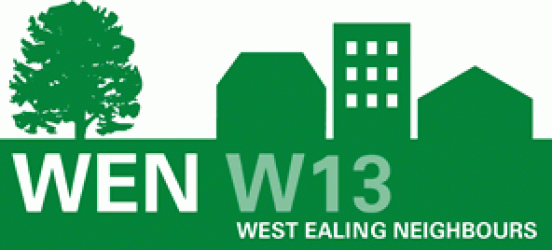I entered the cavernous main hall in Greenford Hall last night slightly late at 7:15 pm but I had not missed anything and proceeding began within minutes. Only 32 people were assembled in the audience. The adult population of Greenford is probably around 30,000. These residents either didn’t know about this meeting or just didn’t care. Most of them would not have known about this meeting as the Council had done nothing to effectively publicise the meeting. I have to believe that 100s of them do care about the future of their town. Greenford Councillor and Council Leader Jason Stacey did not attend and none of the other eight Greenford Councillors identified themselves at the meeting.
Ealing Council Officers Lucy Taylor and Steve Barton did their intros and tried to break us up into two groups. There was immediate opposition to this idea and questions asked, including – why can’t such a small group deal with the issues all together? But Steve would have none of it.
I questioned the fact that it was a virtual certainty that very few of the attendees would have read the proposals being discussed at the meeting. There are 232 pages of consultation material which included maps in colour. Printing all this out from the Council’s web site was not a viable option. Not everyone had Internet access and not everybody had a colour printer. Steve said that hard copies were available – but you had to pay. I said how much, and he said £10 for each of the 60+ page documents.
Effective Participation in Ealing LDF Core Strategy Public Consultation Costs £20
I paid my £20 in cash to Ealing’s Ian Weeks and obtained my documents.
One of the two tables was so cramped that we finished up with three tables and three groups – each discussing all the issues. As the evening unfolded it became apparent that eight of the attendees lived in West Ealing, Boston Manor, and Hayes. So with, at most, just 24 Greenford residents were in attendance how could this meeting qualify as viable LDF Public Consultation in one of the seven Ealing ‘Districts’?
My small table group include Ealing Council’s Lucy Taylor and an Ealing Council transport specialist. Spirited exchanges of views took place. None of the residents had even seen the eight LDF documents never mind read them. The general views expressed by the residents were that what was being suggested to them was not viable, deliverable or what residents wanted. Residents said they wanted better services provided for existing residents; didn’t want to attract new residents; and couldn’t see why or how residential tower blocks all along the Uxbridge Road/Crossrail ‘corridor’ were needed. Doubts were also expressed about the viability/achievability of national housing targets of building 3 million homes by 2020 and meeting the Mayor’s London target of 50,000 new Affordable Homes by 2012.
I said that this current LDF exercise seemed to be about building 14,500 flats in ‘Landmark’ tower blocks. The UK economy is bust and surely it’s entirely possible for Crossrail to be truncated, delayed, or even cancelled to help balance the books. If any money might be available it should go to new schools, NHS Poyclinics and law and order facilities i.e. Police stations. I asked where and when the new State Primary School so desperately need in West Ealing would be built – but no answer was forthcoming.
At one jaw dropping moment Lucy Taylor – Ealing’s Economic Regeneration boss- asked us all ‘What exactly don’t you like about residential tower blocks? Hanwell resident Beryl Pankhurst responded by saying that countless studies around the UK, including the Bethnal Green study, amply described their failure as communities. Many of the 1960s/1970s ones had already been blown up! I said that much of Ealing’s Victorian and Edwardian villas, house and terraces however have stood the test of time (but not so the failing 60s/70s tower blocks at the likes of Green Man Lane, South Acton, Sherwood Close, the Golf Links Estate – all of which are on the Council’s radar to demolish).
It was pointed out that National Government required alternatives to be clearly considered and arguments for and against documented. This was not he case with these documents. Others mentioned the complete absence of ‘real’ cycle tracks or plans for same around the borough; and there was little or no considerations for reducing various forms of pollution, energy usage, and the carbon footprint.
I also went on a bit about the sell off of public land as exemplified at Dickens Yard and Green Man Lane Estate. What bothered me, I said, was that this strategy for public land sale is not documented in the 232 pages and consequently whatever reasons the Council has for doing this are not given a public airing. This is wrong and distinctly unhealthy.
Why Residential Tower Blocks?
Residents talked about – why residential tower blocks? Surely the experiences of the 1960s taught us that that they are social disasters: Why no retail strategy? And why no plans for building re-use/repurposing?
When all three groups reported back to all of us similar messages emerged. Steve publicly promised to email us all each group’s written summary in the near future. He also publicly promised that he’d do this to all attendees at the Ealing Town Hall meeting by 17th September. As of 7:00am on the 18th I’ve received nothing from him.
The lack of general principles and priorities were identified as weaknesses in the plans. The lack of commitment to protect the existing built environment was emphasised. Ealing is full of people – we can’t handle any more was a plea from one group. Why tall buildings was a dominant theme. We like our low rise Ealing said resident Colin Izzard.. Look at the massive opposition against Dickens Yard and Arcadia, he added. Why no residential plans along the A40 was also queried as was the almost exclusive, obsessional concentration of residential development along the whole stretch of the Uxbridge Road.
A plea was made for the clear involvement of the NHS and the Met Police in providing a more local perspectives i.e .where and when would new healthcare and law and order facilities would be built.
All in all the Council Officers took a two hour battering and one has to wonder what their personal (not professional) views are on Ealing’s LDF process, direction and its published intentions.
Next up will be another poorly publicised LDF Public Consultation meeting in Southall on Thursday 24th September. It’s billed to start at 7:00pm and the venue is the Dominion Centre, The Green. I’ll go along to this and see what Southall thinks about the Council’s plans for its town over the next 17 years.
Eric Leach
17th September, 2009

